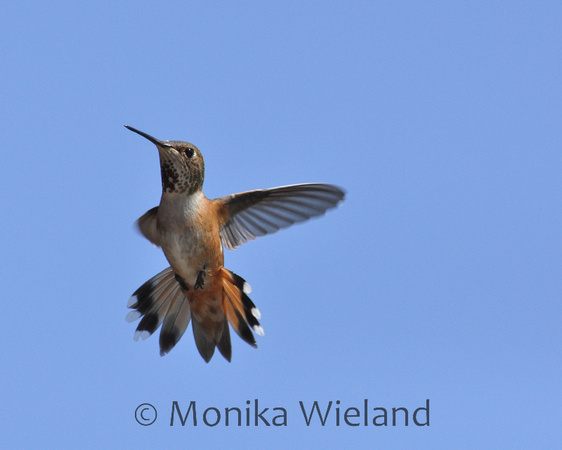On Sunday afternoon my parents and I spent over four hours at Ridgefield National Wildlife Refuge, one of my all-time favorite places to bird watch and a site I try to visit whenever I'm in the area. My dad and I comment how when you make a repeat visit to a location where you saw an uncommon bird, you always find yourself looking for that same species in the exact same spot. That's why we stopped before the bridge into the auto-tour loop to look around the trees where several years ago we found an oriole nest. We found a nest in the same tree, though it looked like the tattered remains of an old one made up primarily of blue fishing line. While looking around, we heard a loud call and then spotted a Bullock's oriole (190). Nice! Sometimes it pays off to take a closer look in those locations.
Along the first part of the drive we saw all the expected species: lots of waterfowl, including another family of pied-billed grebes. While we didn't see the numbers of ducks we do in the winter, a huge variety of species was still present, with small numbers of eleven duck species seen, including about 20 cinnamon teal, a few redhead, and a single male blue-winged teal (191).
 |
| Male gadwall |
We also saw some yellow-headed blackbirds and heard the first of many, many common yellowthroat and marsh wrens for the day. The new purple martin boxes seemed to be fulfilling their purpose, too - we saw one purple martin there, a new species for me at the refuge.
At the bird blind I found a white-breasted nuthatch (192), but the best photo op was of this little Pacific tree frog:
In the middle of the auto tour route is the one mile Kiwa Trail loop, which we hiked. It takes you out through a marsh habitat where this time of year you can hear lots of American bitterns, soras, and Virginia rails. On our walk we also heard several winnowing Wilson's snipes. The other main bird species present here were yellow warblers, tree swallows, and lots and lots of cedar waxwings:
Back in the car, we were able to find an adult great horned owl but not any of the chicks that were supposedly out of the nest nearby. The next reason to come to a stop was for this yellow-headed blackbird perched close to the road. Turns out he was also perched close to a red-winged blackbird nest, and the pair tending the nest were not happy about that, with the male red-winged blackbird keeping a close eye on him and flying directly at him if he made too many moves.
That didn't seem to be enough to deter the yellow-headed blackbird, however. This, for some reason, was definitely the place he wanted to be singing, if that's what you can call the interesting noises they make:
This was a popular stretch for singing birds. Here's one marsh wren belting his little heart out nearby:
Down the final stretch of the auto-tour loop is another one of those places where we always talk about how we saw black terns there once. With the species having been sighted there the day before, we took extra care to look for them again. I spotted something that very well could have been terns extremely high in the air, but as we positioned ourselves to get a better look they seemingly disappeared and we could not relocate them. Two other flying birds did catch my eye, however - at first I thought they were hawks, but the flight didn't seem quite right. Turns out they were bitterns! I've seen bitterns fly occasionally, but never so high in the air! It was quite a way to see these usually secretive birds. The one on the left was calling, and his mouth is open in this picture:
We were just pulling out of the refuge when one last bird caught my eye - a woodpecker that landed on a telephone pole. I only got a quick look, but enough to see it was a red-breasted sapsucker (193), my fourth year bird of the day. In total, we saw and heard 54 species at Ridgefield - not bad at all!































































